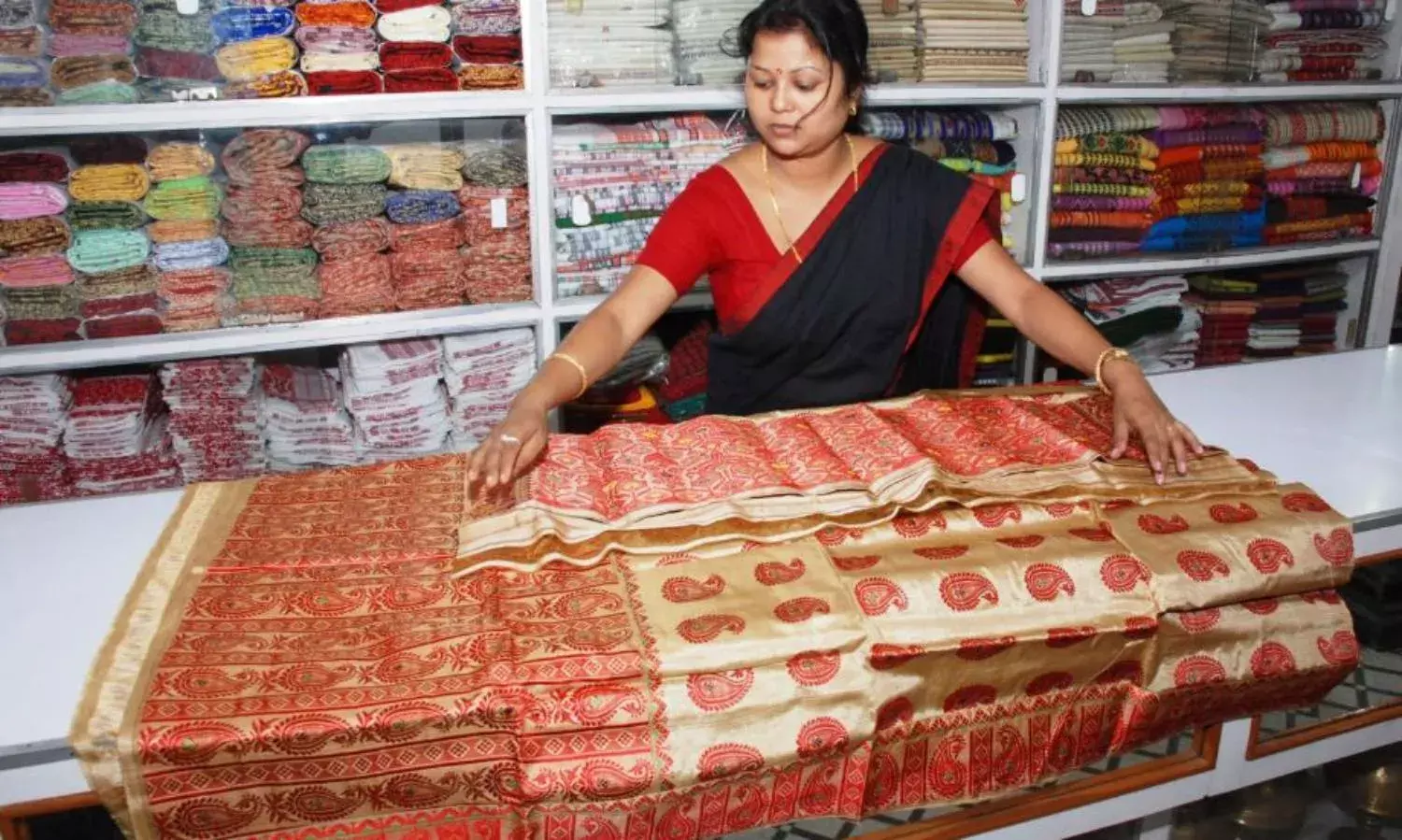Muga: Golden Threads Running Through Culture and Time
The golden fabric of Assam

It was described thus: “as red as the sun, as soft as the surface of the gem, woven while the threads are very wet, and of uniform or mixed texture” by Kautilya, the famous economist-politician at Chandragupta Maurya’s court in the Middle Ages.
This is Muga, the golden fabric of Assam, famous for its uniqueness among the silk fabrics of India."
Muga’s connoisseur value lies in the fact that nowhere else can the silk worm be reared. The caterpillar needs the warm and moist climate of the jungles of the North East region to flourish. There have been attempts to rear it in different locales, even in Japan, but with scant success.
The very name of the variety Antheraea assamensis vindicates Muga worm’s origin to Assam. Now the Muga thread has obtained the GI (Geographical Indication) tag. Assam does produce other silks and also the unique Eri or Endi, a rough fabric for warm shawls, but it is Muga that reigns supreme.
In the traditional Assamese folk dance Bihu to usher in the Spring – Rangali Bihu, the dancers would wear only Muga ensembles. But during the six hundred long reign of the Ahom kings, Muga was allowed to be adorned by only members of the royal family and noblemen.
Obtaining the extremely delicate Muga cocoon is the main problem. Unlike other silk varieties, the worm cannot be reared under artificial conditions. Any change in the weather or environment can play havoc with the crop. It is another reason why the price of the cocoons varies from season to season and affects the price of the product.
Though the Muga weaving industry is in lower Assam the cocoons are abundant only in upper Assam and the Garo hills of Meghalaya. Rearing Muga cocoons is a highly skilled job too and the preserve of local tribal communities. The middlemen buy the cocoons from them and supply to the weaving industry.
The Muga worm eats the leaves of only two indigenous tree varieties, Som (Machilus bombychina) and Soalu (Litsaea polyanthea) . As they voraciously devour the leaves, they have to be protected from birds, ants etc. To prevent the worms from crawling down the farmers wrap slippery plantain leaves smeared with mustard oil. To lure away the ants natives use molasses or other food like dead fish.
The fattened caterpillars are then taken away, hung on baskets to reel their cocoons; the expert natives know exactly when to collect the cocoons so that the butterfly does not emerge. If they cut through the cocoon it becomes useless as a thread. These cocoons are then boiled in huge cauldrons of water mixed with an alkaline solution and then dried.
The best place to see Muga threads turned into its glorious sheen is Sualkuchi, an hour’s drive from Guwahati, the state capital. You can hear the endless staccato sound of saal ( loom) even before arriving there. Once a village now turned into a small township Sualkuchi is the Mecca of the weaving industry in Assam though other centres are also prevalent under individual ownerships. The boutique shops spread across the Panbazar area in Guwahati get their supplies from Sualkuchi.
On arrival, you look at the cottages clustered around and see every courtyard filled with women busily working at either reeling the threads or hunched over the looms busy weaving patterns. Some 50,000 plus workers are concentrated around this cottage industry.
From the beginning to the end product the process is highly compartmentalised, with each worker specialising in a particular segment. The women say that they work minimum eight hours a day but the payment is linked to how many days are spent on a particular ensemble.
Sericulture and the art of weaving are literally woven into the fabric of Assamese life. A good reason why the tradition of weaving has survived while many textile traditions in other parts of India are fighting a losing battle is because Assamese women continue to patronise their beautiful woven garments.
Mekhela-chador, the two-piece ensemble of Assamese women traditionally wear, is never machine-made but hand-woven. The weavers too have adapted to the times, turning out sarees and salwar suit materials in pat silk in new colour combinations and Muga but retaining the typical motifs.
In the original designs, however, red and green dominated. The motifs are adopted from Nature-trees (Miri gos buta) flowers, birds (pigeons), etc. A distinguishing mark is the geometric pattern which can be seen in ensembles of many tribal communities in the North East thus reflecting the age-old affinity of the valley people with those of ethnic tribes living by the bank of the mighty Brahmaputra .
In Sualkuchi, for example, most of the buwonis (weavers) are women from the Bodo plains tribe. The women say that they are taught the art of weaving from a young age to weave their own clothes. Now Sualkuchi has given them an opportunity to earn a living out of their skill.
Over the years, deforestation, fewer Muga farmers in the fray as the young generation of the traditional grower families find it too cumbersome, and pollution have made the supply of cocoons more or less stagnant.


